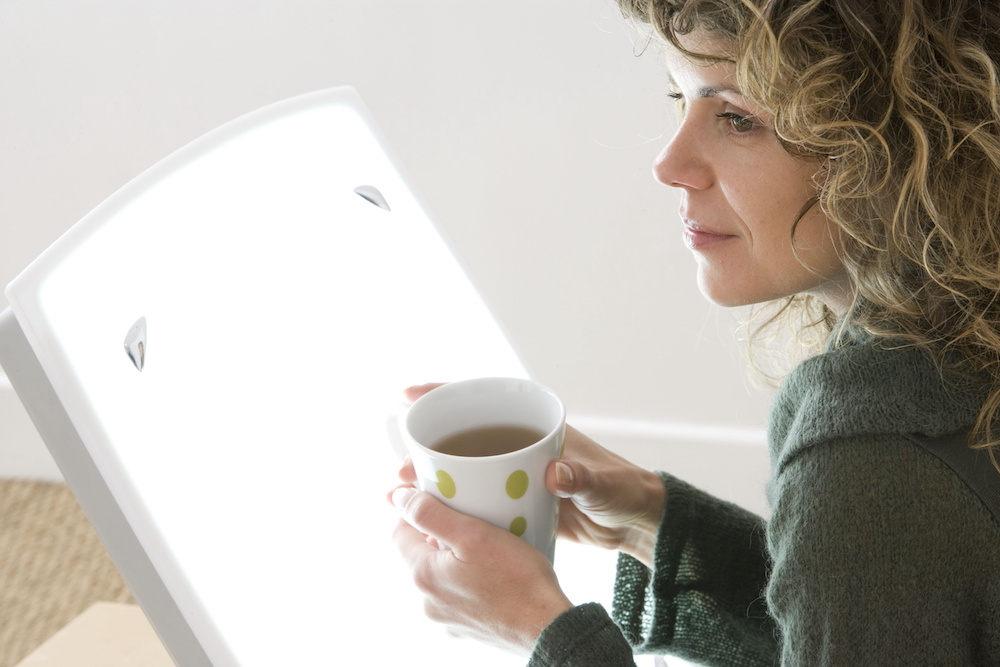As winter sweeps into the Pacific Northwest, residents brace for seasonal sadness. Seasonal affective disorder, or SAD, is a condition affecting an estimated 10 million Americans – many of whom live in the northern reaches of the country. If you struggle with depression during the colder months, we invite you to consider seasonal affective disorder light therapy.
Seasonal Affective Disorder Symptoms
Many people brush off seasonal depression as the “winter blues.” They may think it’s natural to feel low during this time of year. However, if you find your mood worsening each fall and not improving until spring or early summer, you may need clinical intervention. Learn the warning signs of seasonal affective disorder.
Signs that you have SAD include:
- Fatigue and low energy levels
- Feeling depressed nearly every day
- Losing interest in your favorite hobbies
- Sleep problems
- Eating much more or much less than usual
- Gaining or losing a significant amount of weight
- Becoming easily irritated or agitated
- Thinking about suicide or death
- Struggling to concentrate on a task
- Feeling hopeless, guilty, ashamed, or worthless
- Engaging in more frequent use of drugs or alcohol
Why Am I Depressed in the Winter?
The science behind seasonal affective disorder is ever evolving. In spite of mixed data, researchers have determined risk factors and protective factors associated with this diagnosis. Some circumstances that may result in SAD include:
Changes to Serotonin Levels
Researchers believe that reduced sunlight can decrease your serotonin production. Since serotonin is the “feel-good” neurotransmitter, its absence can kickstart a depressive episode.
Melatonin Shifts
Seasonal changes also impact your natural levels of melatonin. This hormone, produced by the pineal gland, controls your sleep-wake cycle. When you can’t sleep, you probably won’t feel very well in the morning.
Circadian Rhythm Goes Off Track
Once Daylight Savings ends, PNW residents have to adjust to a new schedule – one with much less sunlight. The lack of sun (and increase of darkness) can throw off your body’s internal clock. Disruption to a person’s circadian rhythm can cause sleep problems, low mood, and other issues.
Family History of Seasonal Depression
If your loved ones have experienced seasonal affective disorder, you will probably be at risk for the same disorder. Depression and other mental illnesses tend to run in families.
Having Another Mental Health Problem
If you’ve already been diagnosed with depression, anxiety, or substance use disorder, you may be prone to SAD.
Living Up North
Finally, the further you live from the equator, the more likely you are to be affected by decreased sunlight during the winter months.
Light Therapy
Luckily, researchers have identified several effective interventions for seasonal affective disorder. Some of these can even be done from the comfort of your own home! In addition to traditional talk therapy, improved diet, and exercise, another treatment has become well-known throughout the United States: seasonal affective disorder light therapy.
Light therapy, or phototherapy, is the process of shining a bright light on the body. Sessions can last for thirty minutes to two hours, and are most effective when delivered in the early morning. You should have your eyes open and sit in front of the light, but not look directly at it. Many people use this time to read, work on a project, or relax.
Most professionals advise patients to use light therapy at 10,000 lux. This brightness level is considered ideal for the activation of the hypothalamus: the part of the brain that controls your circadian rhythms. It’s about one hundred times brighter than typical indoor lighting, and twice as bright as a clear, sunny day.
It’s important to note that light therapy isn’t a good option for everyone. If you have a condition that makes you sensitive to light – like lupus erythematosus – or have any vulnerability to light damage, we advise you to consider alternative methods.
Choosing Your Light Therapy Lamp
Here are just a few factors to consider when purchasing your own light therapy lamp.
How bright is it? Be sure that your light therapy lamp produces the prescribed 10,000 lux of cool, white light.
Is it adjustable? Many newer fixtures will come with an adjustable dial that allows you to modify the intensity of the light.
How big is it? Smaller lamps aren’t as effective as larger alternatives. Unless you travel frequently, we advise you to purchase a lamp whose surface is around one foot across.
Do You Like the Way It Looks? If you’re not a fan of your lamp’s aesthetic, you may be tempted to store it in a closet and forget about it. Be sure that your light sparks joy in all ways.
Is it UV-free? UV light is a major concern for those undergoing light therapy. Check that your device filters out UV light, which can damage your skin and eyes.
Does it have good reviews? Finally, it’s important to consider that light therapy lamps are not regulated by the FDA. You can evaluate each product’s performance by reading reviews online.
Help for Seasonal Depression
Before investing in a light therapy lamp, we advise you to receive a proper diagnosis from a mental health professional. Such clinicians are always available at Lakeside-Milam.
At our various locations, we offer life-changing treatment for seasonal affective disorder, depression, substance use disorder, and other seasonal struggles. Our outpatient mental health services are available both in person and through telehealth. To learn more about treatment in Washington State, contact our knowledgeable admissions team.






